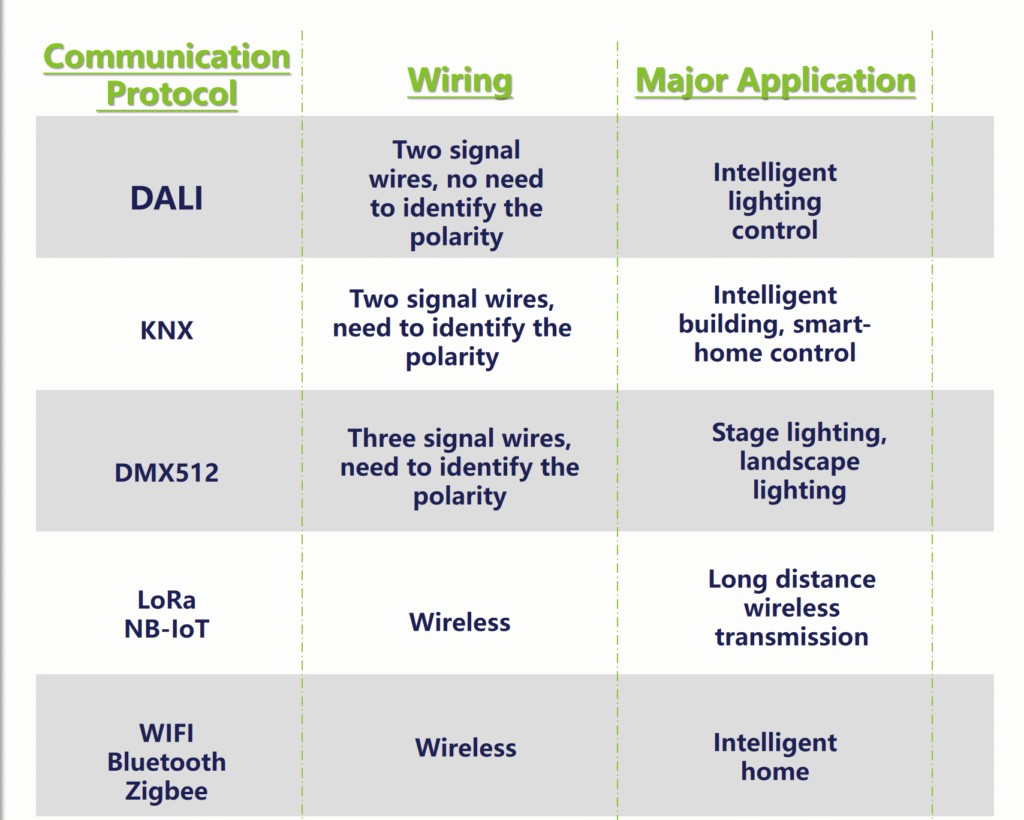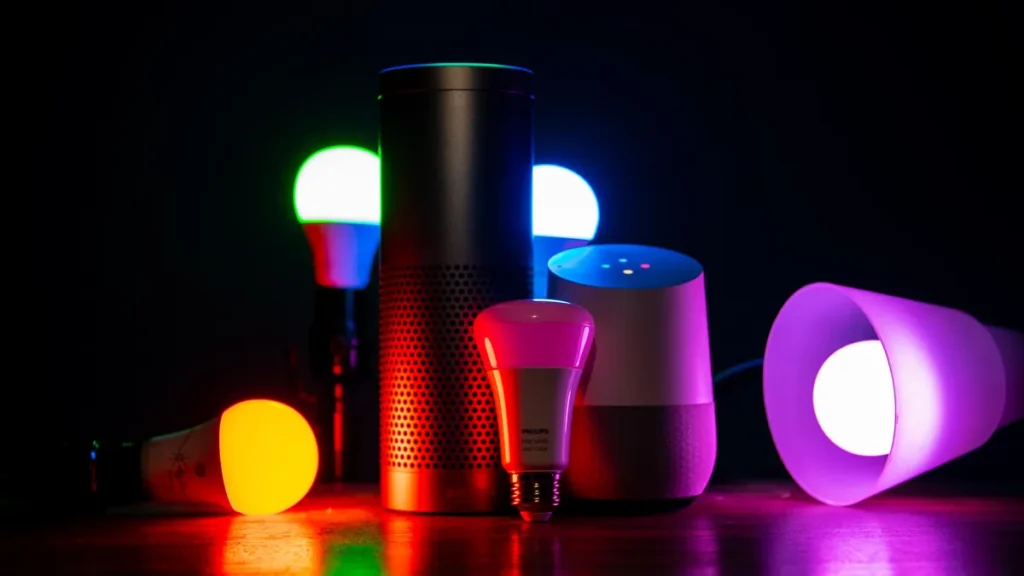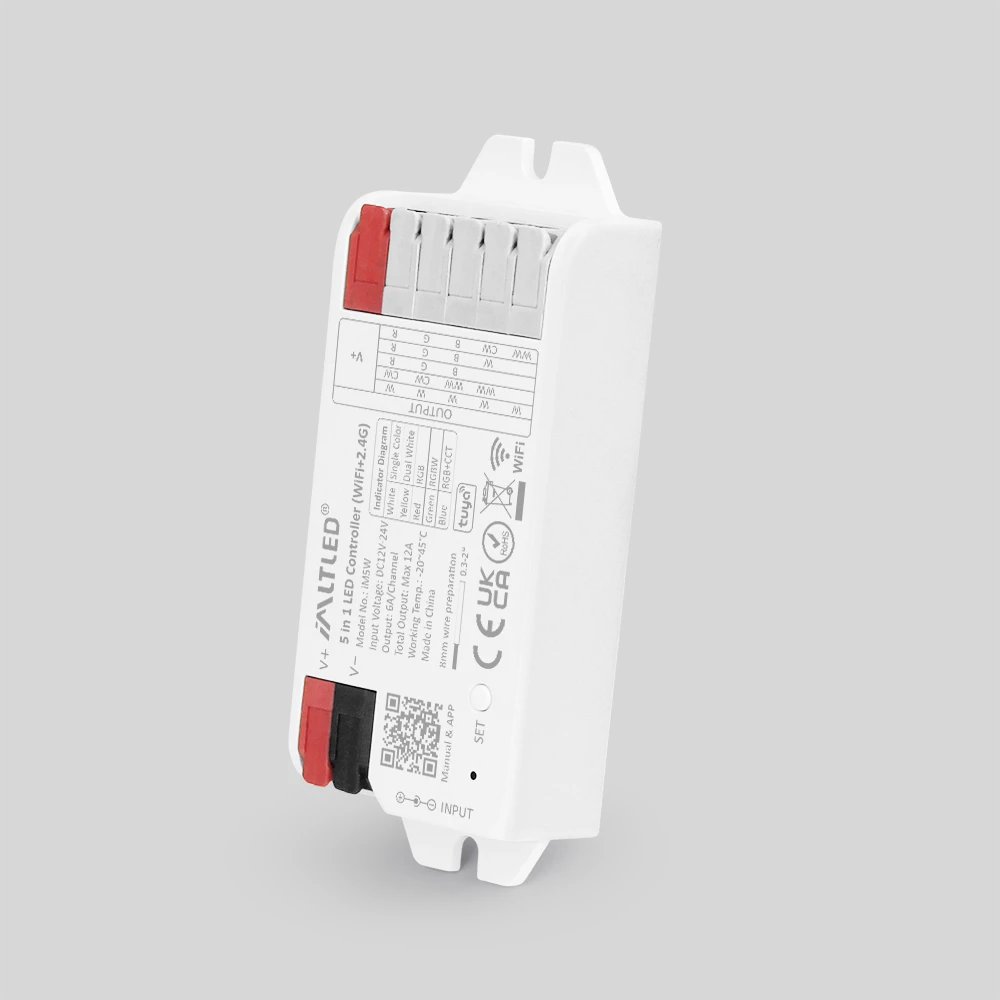In recent years, the smart lighting industry has experienced tremendous growth, driven by increasing demand for energy-efficient, customizable, and interconnected lighting solutions. At the heart of this technological evolution are smart lighting protocols—communication standards that enable smart bulbs, switches, sensors, and other devices to interact seamlessly. Understanding these protocols is essential for manufacturers, integrators, and consumers who want to create reliable, scalable, and user-friendly smart lighting ecosystems. Auoky.com
This article provides a detailed overview of the most prominent smart lighting protocols available today and explores the key differences in their design, application, and performance. By the end, readers will have a clearer understanding of which protocols might suit particular scenarios or requirements.
What Are Smart Lighting Protocols?
Smart lighting protocols are standardized communication formats that allow smart lighting devices to exchange data and commands. These protocols ensure interoperability, security, and efficient data transmission in networks comprising various lighting components and other smart home or building automation systems.
A well-chosen protocol influences a smart lighting system’s responsiveness, installation complexity, compatibility with other devices, and energy consumption. Commonly, protocols fall into two categories depending on their medium: wireless and wired.
Major Smart Lighting Protocols and Their Characteristics
1. Zigbee
Overview: Zigbee is arguably the most popular wireless communication protocol for smart lighting. Operated by the Zigbee Alliance (recently rebranded as the Connectivity Standards Alliance), it uses the IEEE 802.15.4 standard at the physical and MAC layers.
Key Features:
- Mesh Networking: Zigbee supports mesh topology, allowing devices to relay signals across a network, extending range and reliability.
- Low Power Consumption: Designed for battery-powered devices, making it ideal for sensors and remote controls.
- Interoperability: Particularly within the Zigbee-certified ecosystem, devices from different manufacturers can operate together.
- Frequency Band: Operates typically on the 2.4 GHz band globally.
Typical Use Cases: Residential smart lighting, commercial lighting controls, integration with smart home hubs (e.g., Amazon Echo Plus, Philips Hue Bridge).
2. Z-Wave
Overview: Z-Wave is another widely adopted wireless protocol designed specifically for home automation, including smart lighting. It operates on sub-GHz radio frequencies, mainly 908.42 MHz in the U.S. and 868.42 MHz in Europe.
Key Features:
- Mesh Networking: Supports mesh network topologies to enhance network coverage and reliability.
- Low Interference: Operates on lower frequency bands less crowded than 2.4 GHz, reducing interference with Wi-Fi or Bluetooth.
- Interoperability: Certified products must adhere to strict compatibility guidelines.
- Range: Generally offers a longer range per device node than Zigbee, though with somewhat lower data rates.
Typical Use Cases: Home automation lighting controls, especially in environments with congested 2.4 GHz spectra.
3. Bluetooth Mesh
Overview: Bluetooth Mesh extends the classic Bluetooth Low Energy (BLE) protocol with mesh networking capabilities, thereby enabling large-scale device networks such as smart lighting arrays in commercial spaces.
Key Features:
- Mesh Networking: Enables devices to relay messages to expand network coverage.
- Ubiquity: Bluetooth chips are widely available in smartphones and tablets, facilitating easy interaction.
- Low Latency: Offers fast communication suitable for dynamic lighting effects.
- Power Consumption: BLE is designed for low energy use, suitable for battery-powered devices.
Typical Use Cases: Commercial lighting, retail ambient lighting, integration where mobile app control via smartphone is desired.
4. Thread
Overview: Thread is a low-power wireless mesh networking protocol developed by the Thread Group and built on the IEEE 802.15.4 standard, like Zigbee. It aims to create a secure, reliable network particularly suited for Internet of Things (IoT) devices.
Key Features:
- IPv6-based: Supports direct IP addressing, making it natively compatible with internet and cloud services.
- Low Latency and Power: Optimized for battery-powered devices with efficient communication.
- Robustness: Self-healing mesh network for high reliability.
- Interoperability: Often used alongside protocols such as Matter for standardized smart home ecosystems.
Typical Use Cases: High-end residential lighting, integration in ecosystems promoting Matter and IP-based device communication.
5. Wi-Fi
Overview: While not designed specifically for smart lighting, Wi-Fi is commonly used in smart bulbs and lighting systems due to existing infrastructure and high data throughput capabilities.
Key Features:
- High Bandwidth: Suitable for streaming high-fidelity lighting control signals.
- Direct Internet Connectivity: Devices can communicate directly with cloud servers without intermediary hubs.
- No Mesh (Traditionally): Most Wi-Fi networks are star topology; however, newer Wi-Fi standards (e.g., Wi-Fi EasyMesh) aim to support mesh.
Typical Use Cases: Smart bulbs requiring direct smartphone connectivity, simple installations without hubs.
Limitations: Higher power consumption compared to Zigbee and Z-Wave, potential interference in crowded 2.4 GHz/5 GHz bands, increased network latency.
6. DALI (Digital Addressable Lighting Interface)
Overview: DALI is a wired protocol widely used in commercial and industrial lighting control. Unlike the wireless protocols above, DALI requires dedicated wiring and is standardized under IEC 62386.
Key Features:
- Wired Control: Provides reliable and noise-resistant communication over dedicated lines.
- Addressable Devices: Allows precise control of individual fixtures.
- Standardized: Widely supported by commercial-grade lighting manufacturers.
- Integration: Often used alongside BACnet or other building automation protocols.
Typical Use Cases: Office buildings, factories, retail stores, where reliable and centralized lighting control is critical.
Comparative Analysis: Choosing the Right Protocol
| Protocol | Communication Type | Frequency Band | Network Topology | Power Efficiency | Range | Ecosystem & Compatibility | Ideal Usage |
|---|---|---|---|---|---|---|---|
| Zigbee | Wireless | 2.4 GHz | Mesh | High | Medium (10-100m) | Strong smart home ecosystems (Hue, Samsung SmartThings) | Residential, Commercial |
| Z-Wave | Wireless | Sub-GHz (868/908MHz) | Mesh | High | Longer than Zigbee | Robust home automation compatibility | Residential, Interference-prone environments |
| Bluetooth Mesh | Wireless | 2.4 GHz | Mesh | High | Medium | Excellent smartphone integration | Commercial, Mobile-controlled lighting |
| Thread | Wireless | 2.4 GHz | Mesh | Very high | Medium | IP-based ecosystem, interoperable with Matter | Advanced smart homes, IoT-centric deployments |
| Wi-Fi | Wireless | 2.4/5 GHz | Star (some mesh support) | Moderate-High | Medium (depends on router) | Ubiquitous, no hub required | Simple smart bulb installations |
| DALI | Wired | N/A (wired link) | Bus | Low (wired) | Very stable (up to 300m wired) | Industrial/commercial standards | Professional lighting environments |
Emerging Trends: Integration and Unified Ecosystems
The smart lighting industry is increasingly moving towards standardized, interoperable ecosystems. Protocols like Thread and the emerging Matter standard seek to unify communication layers across different device categories. This evolution aims to simplify installation, increase compatibility, and improve user experience.
Manufacturers are also releasing multi-protocol devices (e.g., Zigbee + Bluetooth) to maximize flexibility. Meanwhile, traditional lighting control protocols like DALI continue to evolve in integration with IP networks.
Conclusion
Choosing a smart lighting protocol depends on application scale, environment, power requirements, and interoperability needs. Zigbee and Z-Wave remain dominant in residential and many commercial spaces due to their mature ecosystems and mesh networking capabilities. Bluetooth Mesh and Thread are gaining traction, especially in commercial and cutting-edge IoT scenarios, benefiting from smartphone ubiquity and IP compatibility. Wi-Fi is convenient for straightforward setups but less efficient in larger or battery-powered networks. DALI remains the gold standard in wired commercial lighting control.
Understanding these protocols and their differences empowers consumers, system integrators, and developers to make informed decisions that lead to robust, scalable, and efficient smart lighting deployments. auoky.com
References:
- Zigbee Alliance Documentation
- Z-Wave Alliance Technical Overview
- Bluetooth Mesh Specification
- Thread Group Whitepapers
- IEC 62386 Standard
- Industry Reports on Smart Lighting Market Trends


